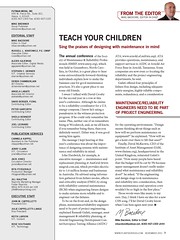Have you ever opened the door of your closet and been struck by a musty odor. Were you ever surprised to find diminutive spots of mildew on a garment you haven't worn for some time? This is a tasteless experience and one that can nothing else but be avoided by using a closet dehumidifier.
In any closet, but particularly one where the clothes and other items are closely packed, a diminutive moisture can cause these problems. Sometimes we put something away that is a diminutive damp; a top coat or a pair of shoes maybe. That small amount of moisture does not have much air to evaporate in. There is no circulation of air in the closet and the moisture is trapped in diminutive air pockets in the middle of the clothes.
Compressor Problems Refrigerator

If the room temperature drops at night that small amount of water will preserve from the air and that is where the qoute begins.
We can take steps to avoid these problems. Obviously, we can make sure we only put dry items in the closet. We can leave the closet doors open during the day, particularly if we are already using a dehumidifier in the bedroom. If all else fails we can use a closet dehumidifier.
A closet dehumidifier does not need to have a high water dismissal capacity. It does need to be small, quiet, safe and cheap to operate. What choices do we have?
There are three main options. The first is a Thermo-Electric Mini-Dehumidifier. These dehumidifiers are marketed as closet dehumidifiers so how do they measure up? This type of dehumidifier does not have a compressor. It operates by exploiting the heat transfer that occurs when an electric current passes through a composite of two dissimilar materials. One side gets hot the other side gets cold and water condenses on the cold side. The process is named after the man who discovered it and is known as the "Peltier Effect."
Because it does not have a compressor this type of dehumidifier is advertised as "almost silent". It does, any way have a fan and users have commented on the noise made by the fan which many find intrusive. These appliances are small but not so small that they will fit nothing else but into a crowded closet. Their electricity consumption is not high in absolute terms but they are much less vigor sufficient than, for example, a typical small refrigerant dehumidifier. The water extracted is deposited in a small bucket so care must be taken when removing the bucket to avoid spillage. Finally, this type of dehumidifier needs a permanent electricity contribute so a power cable will have to be run from the closet to a power socket, which almost nothing else but means leaving the closet door slightly open.
Second there is the Heated Rod Dehumidifier. This does not take off water from the air but raises the temperature inside the closet which reduces relative humidity and thereby lowers the risk of condensation. If mounted on the floor of the closet it creates a circulation of air by convection. The vigor use is almost equivalent to a light bulb and these devices are silent in operation. They are small in diameter but can be quite long. The temperature at which they operate is well below that which would create a fire risk. This type also needs a permanent power contribute via a power cable.
Third is the Rechargeable Dehumidifier. This consists of a small plastic case containing silica gel, water lively crystals. It has no lively parts so is silent. It is also light in weight and small. It can be placed or hung in the closet as required. When the crystals are saturated, after nearby four to six weeks, an indicator changes color. At this point the dehumidifier needs to be recharged by being connected to a power socket for nearby ten hours. The electricity provides heat which dries the crystals and is the only vigor required by this type of dehumidifier.
If you agree with my criteria, "small, quiet, safe and cheap to operate", you will probably agree with my ranking. Third, the Thermo-Electric Mini-Dehumidifier; Second the Heated Rod Dehumidifier; First the Rechargeable Dehumidifier. In terms of buy price the Heated Rod and the Rechargeable types are about the same, depending on model, while the Thermo-Electric dehumidifier is the most costly.
My recommendation to anything who wishes to use a closet dehumidifier is firmly in favor of the Rechargeable Dehumidifier. If you have a very large, walk-in closet you have a small room. A "closet dehumidifier" is not convenient for areas of this size.
Closet Dehumidifier - How to Keep Your Closet Dry and Mold FreePorter Cable Compressor Troubleshooting DC Motor Controller Refrigeration Compressor Troubleshooting